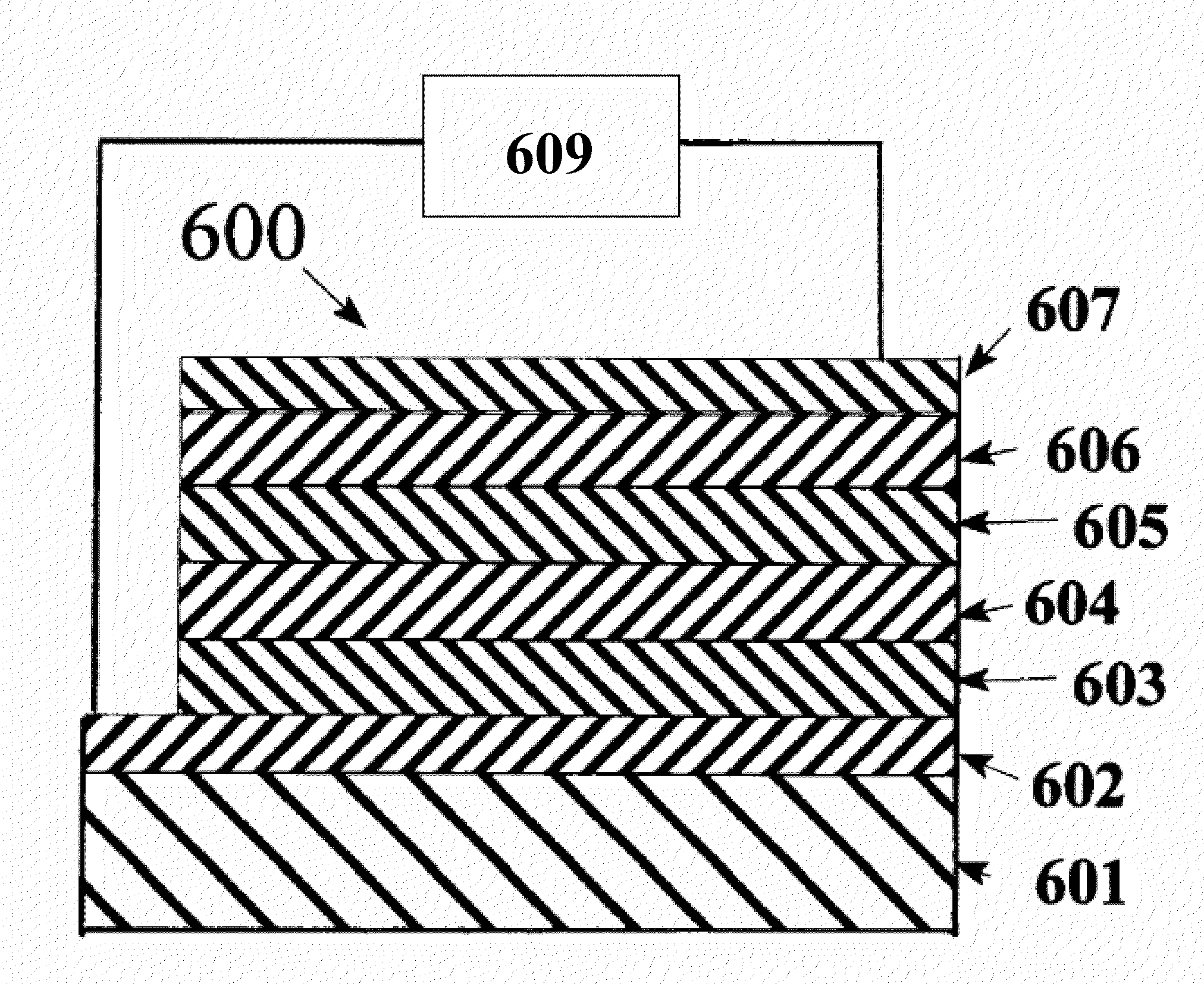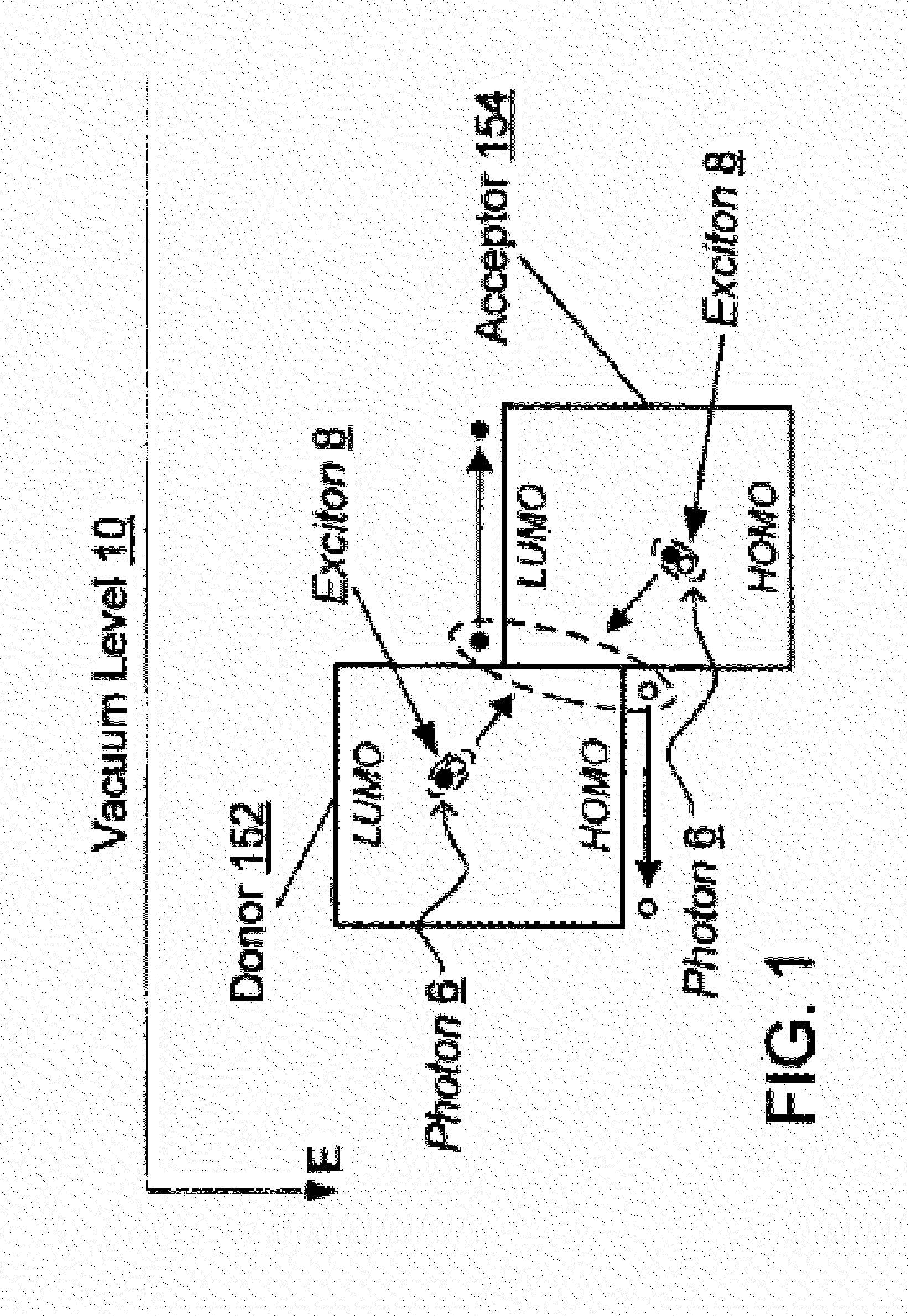Growth of ordered crystalline organic films
a crystalline organic film and growth technology, applied in the field of organic photosensitive films, can solve the problems of not providing power to circuitry, devices or equipment, and inherently incapable of exceeding the product's maximum total power generated by a pv devi
- Summary
- Abstract
- Description
- Claims
- Application Information
AI Technical Summary
Benefits of technology
Problems solved by technology
Method used
Image
Examples
examples
[0078]Specific examples of the invention are illustrated and / or described herein. However, it will be appreciated that modifications and variations of the invention are covered by the above teachings and within the purview of the appended claims without departing from the spirit and scope of the invention.
General OVPD Process
[0079]A non-limiting example of an OVPD system schematic is shown in FIG. 3. In OVPD a hot inert carrier gas 1 is infused with an evaporated organic 2 which emanates from source cell 3. The organic 2 is transported to a cooled substrate 4 where deposition occurs, thus forming film 5. Gas temperature, substrate temperature, and gas pressure can be varied to affect the crystallinity of film 5.
[0080]In one embodiment, in situ diagnostics can be used to monitor the crystallinity of the film 5, such as reflection high energy electron diffraction (RHEED), a technique which is commonly used in ultrahigh vacuum systems such as organic molecular beam deposition (OMBD).
[0...
PUM
| Property | Measurement | Unit |
|---|---|---|
| temperature | aaaaa | aaaaa |
| temperature | aaaaa | aaaaa |
| external quantum efficiency | aaaaa | aaaaa |
Abstract
Description
Claims
Application Information
 Login to View More
Login to View More - R&D
- Intellectual Property
- Life Sciences
- Materials
- Tech Scout
- Unparalleled Data Quality
- Higher Quality Content
- 60% Fewer Hallucinations
Browse by: Latest US Patents, China's latest patents, Technical Efficacy Thesaurus, Application Domain, Technology Topic, Popular Technical Reports.
© 2025 PatSnap. All rights reserved.Legal|Privacy policy|Modern Slavery Act Transparency Statement|Sitemap|About US| Contact US: help@patsnap.com



